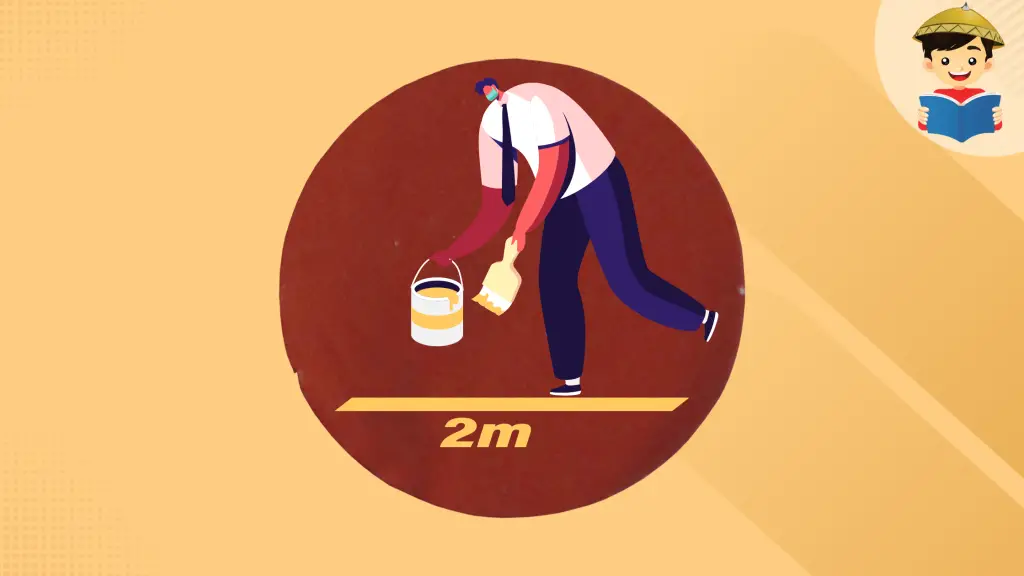

Community Blog
Keep up-to-date on postgraduate related issues with our quick reads written by students, postdocs, professors and industry leaders.
Scope and Delimitations – Explained & Example
- By DiscoverPhDs
- October 2, 2020

What Is Scope and Delimitation in Research?
The scope and delimitations of a thesis, dissertation or research paper define the topic and boundaries of the research problem to be investigated.
The scope details how in-depth your study is to explore the research question and the parameters in which it will operate in relation to the population and timeframe.
The delimitations of a study are the factors and variables not to be included in the investigation. In other words, they are the boundaries the researcher sets in terms of study duration, population size and type of participants, etc.
Difference Between Delimitations and Limitations
Delimitations refer to the boundaries of the research study, based on the researcher’s decision of what to include and what to exclude. They narrow your study to make it more manageable and relevant to what you are trying to prove.
Limitations relate to the validity and reliability of the study. They are characteristics of the research design or methodology that are out of your control but influence your research findings. Because of this, they determine the internal and external validity of your study and are considered potential weaknesses.
In other words, limitations are what the researcher cannot do (elements outside of their control) and delimitations are what the researcher will not do (elements outside of the boundaries they have set). Both are important because they help to put the research findings into context, and although they explain how the study is limited, they increase the credibility and validity of a research project.
Guidelines on How to Write a Scope
A good scope statement will answer the following six questions:

- Why – the general aims and objectives (purpose) of the research.
- What – the subject to be investigated, and the included variables.
- Where – the location or setting of the study, i.e. where the data will be gathered and to which entity the data will belong.
- When – the timeframe within which the data is to be collected.
- Who – the subject matter of the study and the population from which they will be selected. This population needs to be large enough to be able to make generalisations.
- How – how the research is to be conducted, including a description of the research design (e.g. whether it is experimental research, qualitative research or a case study), methodology, research tools and analysis techniques.
To make things as clear as possible, you should also state why specific variables were omitted from the research scope, and whether this was because it was a delimitation or a limitation. You should also explain why they could not be overcome with standard research methods backed up by scientific evidence.
How to Start Writing Your Study Scope
Use the below prompts as an effective way to start writing your scope:
- This study is to focus on…
- This study covers the…
- This study aims to…
Guidelines on How to Write Delimitations
Since the delimitation parameters are within the researcher’s control, readers need to know why they were set, what alternative options were available, and why these alternatives were rejected. For example, if you are collecting data that can be derived from three different but similar experiments, the reader needs to understand how and why you decided to select the one you have.
Your reasons should always be linked back to your research question, as all delimitations should result from trying to make your study more relevant to your scope. Therefore, the scope and delimitations are usually considered together when writing a paper.
How to Start Writing Your Study Delimitations
Use the below prompts as an effective way to start writing your study delimitations:
- This study does not cover…
- This study is limited to…
- The following has been excluded from this study…
Examples of Delimitation in Research
Examples of delimitations include:
- research objectives,
- research questions,
- research variables,
- target populations,
- statistical analysis techniques .
Examples of Limitations in Research
Examples of limitations include:
- Issues with sample and selection,
- Insufficient sample size, population traits or specific participants for statistical significance,
- Lack of previous research studies on the topic which has allowed for further analysis,
- Limitations in the technology/instruments used to collect your data,
- Limited financial resources and/or funding constraints.

A well written figure legend will explain exactly what a figure means without having to refer to the main text. Our guide explains how to write one.

This article will answer common questions about the PhD synopsis, give guidance on how to write one, and provide my thoughts on samples.

Learn 10 ways to impress a PhD supervisor for increasing your chances of securing a project, developing a great working relationship and more.
Join thousands of other students and stay up to date with the latest PhD programmes, funding opportunities and advice.

Browse PhDs Now

If you’re about to sit your PhD viva, make sure you don’t miss out on these 5 great tips to help you prepare.

Tenure is a permanent position awarded to professors showing excellence in research and teaching. Find out more about the competitive position!

Chris is making minor corrections to his PhD thesis post-viva at the University of Nottingham. His research was on optimising the cost-effectiveness of risk-based screening for diabetic retinopathy.

Christian is a PhD student at the University of Leeds. His research project investigatores the role of the molecular clock in sympathetic preganglionic neurons.
Join Thousands of Students
How To Write Scope and Delimitation of a Research Paper (With Examples)

An effective research paper or thesis has a well-written Scope and Delimitation. This portion specifies your study’s coverage and boundaries.
Not yet sure about how to write your research’s Scope and Delimitation? Fret not, as we’ll guide you through the entire writing process through this article.
Related: How To Write Significance of the Study (With Examples)
Table of Contents
What is the scope and delimitation of a research paper.

The “Scope and Delimitation” section states the concepts and variables your study covered. It tells readers which things you have included and excluded in your analysis.
This portion tells two things: 1
- The study’s “Scope” – concepts and variables you have explored in your research and;
- The study’s “Delimitation” – the “boundaries” of your study’s scope. It sets apart the things included in your analysis from those excluded.
For example, your scope might be the effectiveness of plant leaves in lowering blood sugar levels. You can “delimit” your study only to the effect of gabi leaves on the blood glucose of Swiss mice.
Where Should I Put the Scope and Delimitation?
This portion is in Chapter 1, usually after the “Background of the Study.”
Why Should I Write the Scope and Delimitation of My Research Paper?
There’s a lot to discover in a research paper or thesis. However, your resources and time dedicated to it are scarce. Thus, given these constraints, you have to narrow down your study. You do this in the Scope and Delimitation.
Suppose you’re studying the correlation between the quantity of organic fertilizer and plant growth . Experimenting with several types of plants is impossible because of several limitations. So, you’ve decided to use one plant type only.
Informing your readers about this decision is a must. So, you have to state it in your Scope and Delimitation. It also acts as a “disclaimer” that your results are inapplicable to the entire plant kingdom.
What Is the Difference Between Delimitation and Limitation?

People often use the terms “Delimitation” and “Limitation” interchangeably. However, these words differ 2 .
Delimitation refers to factors you set to limit your analysis. It delineates those that are included in your research and those that are excluded. Remember, delimitations are within your control.
Meanwhile, limitations are factors beyond your control that may affect your research’s results. You can think of limitations as the “weaknesses” of your study.
Let’s go back to our previous example. Due to some constraints, you’ve only decided to examine one plant type: dandelions. This is an example of a delimitation since it limits your analysis to dandelions only and not other plant types. Note that the number of plant types used is within your control.
Meanwhile, your study cannot state that a higher quantity of organic fertilizer is the sole reason for plant growth. That’s because your research’s focus is only on correlation. Since this is already beyond your control, then this is a limitation.
How To Write Scope and Delimitation: Step-by-Step Guide
To write your research’s Scope and Delimitation section, follow these steps:
1. Review Your Study’s Objectives and Problem Statement

Your study’s coverage relies on its objectives. Thus, you can only write this section if you know what you’re researching. Furthermore, ensure that you understand the problems you ought to answer.
Once you understand the abovementioned things, you may start writing your study’s Scope and Delimitation.
2. State the Key Information To Explain Your Study’s Coverage and Boundaries

a. The Main Objective of the Research
This refers to the concept that you’re focusing on in your research. Some examples are the following:
- level of awareness or satisfaction of a particular group of people
- correlation between two variables
- effectiveness of a new product
- comparison between two methods/approaches
- lived experiences of several individuals
It’s helpful to consult your study’s Objectives or Statement of the Problem section to determine your research’s primary goal.
b. Independent and Dependent Variables Included
Your study’s independent variable is the variable that you manipulate. Meanwhile, the dependent variable is the variable whose result depends upon the independent variable. Both of these variables must be clear and specific when indicated.
Suppose you study the relationship between social media usage and students’ language skills. These are the possible variables for the study:
- Independent Variable: Number of hours per day spent on using Facebook
- Dependent Variable: Grade 10 students’ scores in Quarterly Examination in English.
Note how specific the variables stated above are. For the independent variable, we narrow it down to Facebook only. Since there are many ways to assess “language skills,” we zero in on the students’ English exam scores as our dependent variable.
c. Subject of the Study
This refers to your study’s respondents or participants.
In our previous example, the research participants are Grade 10 students. However, there are a lot of Grade 10 students in the Philippines. Thus, we have to select from a specific school only—for instance, Grade 10 students from a national high school in Manila.
d. Timeframe and Location of the Study
Specify the month(s), quarter(s), or year(s) as the duration of your study. Also, indicate where you will gather the data required for your research.
e. Brief Description of the Study’s Research Design and Methodology
You may also include whether your research is quantitative or qualitative, the sampling method (cluster, stratified, purposive) applied, and how you conducted the experiment.
Using our previous example, the Grade 10 students can be selected using stratified sampling. Afterward, the researchers may obtain their English quarterly exam scores from their respective teachers. You can add these things to your study’s Scope and Delimitation.
3. Indicate Which Variables or Factors Are Not Covered by Your Research

Although you’ve already set your study’s coverage and boundaries in Step 2, you may also explicitly mention things you’ve excluded from your research.
Returning to our previous example, you can state that your assessment will not include the vocabulary and oral aspects of the English proficiency skill.
Examples of Scope and Delimitation of a Research Paper
1. scope and delimitation examples for quantitative research.

a. Example 1
Research Title
A Study on the Relationship of the Extent of Facebook Usage on the English Proficiency Level of Grade 10 Students of Matagumpay High School
Scope and Delimitation
(Main Objective)
This study assessed the correlation between the respondents’ duration of Facebook usage and their English proficiency level.
(Variables used)
The researchers used the number of hours per day of using Facebook and the activities usually performed on the platform to assess the respondents’ extent of Facebook usage. Meanwhile, the respondents’ English proficiency level is limited to their quarterly English exam scores.
(Subject of the study)
A sample of fifty (50) Grade 10 students of Matagumpay High School served as the study’s respondents.
(Timeframe and location)
This study was conducted during the Second Semester of the School Year 2018 – 2019 on the premises of Matagumpay High School in Metro Manila.
(Methodology)
The respondents are selected by performing stratified random sampling to ensure that there will be ten respondents from five Grade 10 classes of the school mentioned above. The researchers administered a 20-item questionnaire to assess the extent of Facebook usage of the selected respondents. Meanwhile, the data for the respondents’ quarterly exam scores were acquired from their English teachers. The collected data are handled with the utmost confidentiality. Spearman’s Rank Order Correlation was applied to quantitatively assess the correlation between the variables.
(Exclusions)
This study didn’t assess other aspects of the respondents’ English proficiency, such as English vocabulary and oral skills.
Note: The words inside the parentheses in the example above are guides only. They are not included in the actual text.
b. Example 2
Level of Satisfaction of Grade 11 Students on the Implementation of the Online Learning Setup of Matagumpay High School for SY 2020 – 2021
This study aims to identify students’ satisfaction levels with implementing online learning setups during the height of the COVID-19 pandemic.
Students’ satisfaction was assessed according to teachers’ pedagogy, school policies, and learning materials used in the online learning setup. The respondents included sixty (60) Grade 11 students of Matagumpay High School who were randomly picked. The researchers conducted the study from October 2020 to February 2021.
Online platforms such as email and social media applications were used to reach the respondents. The researchers administered a 15-item online questionnaire to measure the respondents’ satisfaction levels. Each response was assessed using a Likert Scale to provide a descriptive interpretation of their answers. A weighted mean was applied to determine the respondents’ general satisfaction.
This study did not cover other factors related to the online learning setup, such as the learning platform used, the schedule of synchronous learning, and channels for information dissemination.
2. Scope and Delimitation Examples for Qualitative Research

Lived Experiences of Public Utility Vehicle (PUV) Drivers of Antipolo City Amidst the Continuous June 2022 Oil Price Hikes
This research focused on the presentation and discussion of the lived experiences of PUV drivers during the constant oil price hike in June 2022.
The respondents involved are five (5) jeepney drivers from Antipolo City who agreed to be interviewed. The researchers assessed their experiences in terms of the following: (1) daily net income; (2) duration and extent of working; (3) alternative employment opportunity considerations; and (4) mental and emotional status. The respondents were interviewed daily at their stations on June 6 – 10, 2022.
In-depth one-on-one interviews were used for data collection. Afterward, the respondents’ first-hand experiences were drafted and annotated with the researchers’ insights.
The researchers excluded some factors in determining the respondents’ experiences, such as physical and health conditions and current family relationship status.
A Study on the Perception of the Residents of Mayamot, Antipolo City on the Political and Socioeconomic Conditions During the Post-EDSA Period (1986 – 1996)
This research aims to discuss the perception of Filipinos regarding the political and socioeconomic economic conditions during the post-EDSA period, specifically during the years 1986 – 1996.
Ten (10) residents of Mayamot, Antipolo City, who belonged to Generation X (currently 40 – 62 years old), were purposively selected as the study’s respondents. The researchers asked them about their perception of the following aspects during the period mentioned above (1) performance of national and local government; (2) bureaucracy and government services; (3) personal economic and financial status; and (4) wage purchasing power.
The researchers conducted face-to-face interviews in the respondents’ residences during the second semester of AY 2018 – 2019. The responses were written and corroborated with the literature on the post-EDSA period.
The following factors were not included in the research analysis: political conflicts and turmoils, the status of the legislative and judicial departments, and other macroeconomic indicators.
Tips and Warnings
1. use the “5ws and 1h” as your guide in understanding your study’s coverage.
- Why did you write your study?
- What variables are included?
- Who are your study’s subject
- Where did you conduct the study?
- When did your study start and end?
- How did you conduct the study?
2. Use key phrases when writing your research’s scope
- This study aims to …
- This study primarily focuses on …
- This study deals with …
- This study will cover …
- This study will be confined…
3. Use key phrases when writing factors beyond your research’s delimitations
- The researcher(s) decided to exclude …
- This study did not cover….
- This study excluded …
- These variables/factors were excluded from the study…
4. Don’t forget to ask for help
Your research adviser can assist you in selecting specific concepts and variables suitable to your study. Make sure to consult him/her regularly.
5. Make it brief
No need to make this section wordy. You’re good to go if you meet the “5Ws and 1Hs”.
Frequently Asked Questions
1. what are scope and delimitation in tagalog.
In a Filipino research ( pananaliksik ), Scope and Delimitation is called “ Saklaw at Delimitasyon”.
Here’s an example of Scope and Delimitation in Filipino:
Pamagat ng Pananaliksik
Epekto Ng Paggamit Ng Mga Digital Learning Tools Sa Pag-Aaral Ng Mga Mag-Aaral Ng Mataas Na Paaralan Ng Matagumpay Sa General Mathematics
Sakop at Delimitasyon ng Pag-aaral
Nakatuon ang pananaliksik na ito sa epekto ng paggamit ng mga digital learning aids sa pag-aaral ng mga mag-aaral.
Ang mga digital learning tools na kinonsidera sa pag-aaral na ito ay Google Classroom, Edmodo, Kahoot, at mga piling bidyo mula YouTube. Samantala, ang epekto sa pag-aaral ng mga mag-aaral ng mga nabanggit na digital learning tools ay natukoy sa pamamagitan ng kanilang (1) mga pananaw hinggil sa benepisyo nito sa kanilang pag-aaral sa General Mathematics at (2) kanilang average grade sa asignaturang ito.
Dalawampu’t-limang (25) mag-aaral mula sa Senior High School ng Mataas na Paaralan ng Matagumpay ang pinili para sa pananaliksik na ito. Sila ay na-interbyu at binigyan ng questionnaire noong Enero 2022 sa nasabing paaralan. Sinuri ang resulta ng pananaliksik sa pamamagitan ng mga instrumentong estadistikal na weighted mean at Analysis of Variance (ANOVA). Hindi saklaw ng pananaliksik na ito ang ibang mga aspeto hinggil sa epekto ng online learning aids sa pag-aaral gaya ng lebel ng pag-unawa sa aralin at kakayahang iugnay ito sa araw-araw na buhay.
2. The Scope and Delimitation should consist of how many paragraphs?
Three or more paragraphs will suffice for your study’s Scope and Delimitation. Here’s our suggestion on what you should write for each paragraph:
Paragraph 1: Introduction (state research objective) Paragraph 2: Coverage and boundaries of the research (you may divide this section into 2-3 paragraphs) Paragraph 3 : Factors excluded from the study
- University of St. La Salle. Unit 3: Lesson 3 Setting the Scope and Limitation of a Qualitative Research [Ebook] (p. 12). Retrieved from https://www.studocu.com/ph/document/university-of-st-la-salle/senior-high-school/final-sg-pr1-11-12-unit-3-lesson-3-setting-the-scope-and-limitation-of-a-qualitative-research/24341582
- Theofanidis, D., & Fountouki, A. (2018). Limitations and Delimitations in the Research Process. Perioperative Nursing (GORNA), 7(3), 155–162. doi: 10.5281/zenodo.2552022
Written by Jewel Kyle Fabula
in Career and Education , Juander How
Last Updated May 6, 2023 09:59 AM
Jewel Kyle Fabula
Jewel Kyle Fabula is a Bachelor of Science in Economics student at the University of the Philippines Diliman. His passion for learning mathematics developed as he competed in some mathematics competitions during his Junior High School years. He loves cats, playing video games, and listening to music.
Browse all articles written by Jewel Kyle Fabula
Copyright Notice
All materials contained on this site are protected by the Republic of the Philippines copyright law and may not be reproduced, distributed, transmitted, displayed, published, or broadcast without the prior written permission of filipiknow.net or in the case of third party materials, the owner of that content. You may not alter or remove any trademark, copyright, or other notice from copies of the content. Be warned that we have already reported and helped terminate several websites and YouTube channels for blatantly stealing our content. If you wish to use filipiknow.net content for commercial purposes, such as for content syndication, etc., please contact us at legal(at)filipiknow(dot)net

Diving Deeper into Limitations and Delimitations

If you are working on a thesis, dissertation, or other formal research project, chances are your advisor or committee will ask you to address the delimitations of your study. When faced with this request, many students respond with a puzzled look and then go on to address what are actually the study’s limitations.
In a previous article , we covered what goes into the limitations, delimitations, and assumptions sections of your thesis or dissertation. Here, we will dive a bit deeper into the differences between limitations and delimitations and provide some helpful tips for addressing them in your research project—whether you are working on a quantitative or qualitative study.
Acknowledging Weaknesses vs. Defining Boundaries
These concepts are easy to get confused because both limitations and delimitations restrict (or limit) the questions you’ll be able to answer with your study, most notably in terms of generalizability.
However, the biggest difference between limitations and delimitations is the degree of control you have over them—that is, how much they are based in conscious, intentional choices you made in designing your study.
Limitations occur in all types of research and are, for the most part, outside the researcher’s control (given practical constraints, such as time, funding, and access to populations of interest). They are threats to the study’s internal or external validity.
Limitations may include things such as participant drop-out, a sample that isn’t entirely representative of the desired population, violations to the assumptions of parametric analysis (e.g., normality, homogeneity of variance), the limits of self-report, or the absence of reliability and validity data for some of your survey measures.
Limitations can get in the way of your being able to answer certain questions or draw certain types of inferences from your findings. Therefore, it’s important to acknowledge them upfront and make note of how they restrict the conclusions you’ll be able to draw from your study. Frequently, limitations can get in the way of our ability to generalize our findings to the larger populations or to draw causal conclusions, so be sure to consider these issues when you’re thinking about the potential limitations of your study.
Delimitations are also factors that can restrict the questions you can answer or the inferences you can draw from your findings. However, they are based on intentional choices you make a priori (i.e., as you’re designing the study) about where you’re going to draw the boundaries of your project. In other words, they define the project’s scope.
Like limitations, delimitations are a part of every research project, and this is not a bad thing. In fact, it’s very important! You can’t study everything at once. If you try to do so, your project is bound to get huge and unwieldy, and it will become a lot more difficult to interpret your results or come to meaningful conclusions with so many moving parts. You have to draw the line somewhere, and the delimitations are where you choose to draw these lines.
One of the clearest examples of a delimitation that applies to almost every research project is participant exclusion criteria. In conducting either a quantitative or a qualitative study, you will have to define your population of interest. Defining this population of interest means that you will need to articulate the boundaries of that population (i.e., who is not included). Those boundaries are delimitations.
For example, if you’re interested in understanding the experiences of elementary school teachers who have been implementing a new curriculum into their classrooms, you probably won’t be interviewing or sending a survey to any of the following people: non-teachers, high-school teachers, college professors, principals, parents of elementary school children, or the children themselves. Furthermore, you probably won’t be talking to elementary school teachers who have not yet had the experience of implementing the curriculum in question. You would probably only choose to gather data from elementary school teachers who have had this experience because that is who you’re interested in for the purposes of your study. Perhaps you’ll narrow your focus even more to elementary school teachers in a particular school district who have been teaching for a particular length of time. The possibilities can go on. These are choices you will need to make, both for practical reasons (i.e., the population you have access to) and for the questions you are trying to answer.
Of course, for this particular example, this does not mean that it wouldn’t be interesting to also know what principals think about the new curriculum. Or parents. Or elementary school children. It just means that, for the purposes of your project and your research questions, you’re interested in the experience of the teachers, so you’re excluding anyone who does not meet those criteria. Having delimitations to your population of interest also means that you won’t be able to answer any questions about the experiences of those other populations; this is ok because those populations are outside of the scope of your project . As interesting as their experiences might be, you can save these questions for another study. That is the part of the beauty of research: there will always be more studies to do, more questions to ask. You don’t have to (and can’t) do it all in one project.
Continuing with the previous example, for instance, let’s suppose that the problem you are most interested in addressing is the fact that we know relatively little about elementary school teachers’ experiences of implementing a new curriculum. Perhaps you believe that knowing more about teachers’ experiences could inform their training or help administrators know more about how to support their teachers. If the identified problem is our lack of knowledge about teachers’ experiences, and your research questions focus on better understanding these experiences, that means that you are choosing not to focus on other problems or questions, even those that may seem closely related. For instance, you are not asking how effective the new curriculum is in improving student test scores or graduation rates. You might think that would be a very interesting question, but it will have to wait for another study. In narrowing the focus of your research questions, you limit your ability to answer other questions, and again, that’s ok. These other questions may be interesting and important, but, again, they are beyond the scope of your project .
Common Examples of Limitations
While each study will have its own unique set of limitations, some limitations are more common in quantitative research, and others are more common in qualitative research.
In quantitative research, common limitations include the following:
– Participant dropout
– Small sample size, low power
– Non-representative sample
– Violations of statistical assumptions
– Non-experimental design, lack of manipulation of variables, lack of controls
– Potential confounding variables
– Measures with low (or unknown) reliability or validity
– Limits of an instrument to measure the construct of interest
– Data collection methods (e.g., self-report)
– Anything else that might limit the study’s internal or external validity
In qualitative research, common limitations include the following:
– Lack of generalizability of findings (not the goal of qualitative research, but still worth mentioning as a limitation)
– Inability to draw causal conclusions (again, not the goal of qualitative research, but still worth mentioning)
– Researcher bias/subjectivity (especially if there is only one coder)
– Limitations in participants’ ability/willingness to share or describe their experiences
– Any factors that might limit the rigor of data collection or analysis procedures
Common Examples of Delimitations
As noted above, the two most common sources of delimitations in both quantitative and qualitative research include the following:
– Inclusion/exclusion criteria (or how you define your population of interest)
– Research questions or problems you’ve chosen to examine
Several other common sources of delimitations include the following:
– Theoretical framework or perspective adopted
– Methodological framework or paradigm chosen (e.g., quantitative, qualitative, or mixed-methods)
– In quantitative research, the variables you’ve chosen to measure or manipulate (as opposed to others)
Whether you’re conducting a quantitative or qualitative study, you will (hopefully!) have chosen your research design because it is well suited to the questions you’re hoping to answer. Because these questions define the boundaries or scope of your project and thus point to its delimitations, your research design itself will also be related to these delimitations.
Questions to Ask Yourself
As you are considering the limitations and delimitations of your project, it can be helpful to ask yourself a few different questions.
Questions to help point out your study’s limitations :
1. If I had an unlimited budget, unlimited amounts of time, access to all possible populations, and the ability to manipulate as many variables as I wanted, how would I design my study differently to be better able to answer the questions I want to answer? (The ways in which your study falls short of this will point to its limitations.)
2. Are there design issues that get in the way of my being able to draw causal conclusions?
3. Are there sampling issues that get in the way of my being able to generalize my findings?
4. Are there issues related to the measures I’m using or the methods I’m using to collect data? Do I have concerns about participants telling the truth or being able to provide accurate responses to my questions?
5. Are there any other factors that might limit my study’s internal or external validity?
Questions that help point out your study’s delimitations :
1. What are my exclusion criteria? Who did I not include in my study, and why did I make this choice?
2. What questions did I choose not to address in my study? (Of course, the possibilities are endless here, but consider related questions that you chose not to address.)
3. In what ways did I narrow the scope of my study in order to hone in on a particular issue or question?
4. What other methodologies did I not use that might have allowed me to answer slightly different questions about the same topic?
How to Write About Limitations and Delimitations
Remember, having limitations and delimitations is not a bad thing. They’re present in even the most rigorous research. The important thing is to be aware of them and to acknowledge how they may impact your findings or the conclusions you can draw.
In fact, writing about them and acknowledging them gives you an opportunity to demonstrate that you can think critically about these aspects of your study and how they impact your findings, even if they were out of your control.
Keep in mind that your study’s limitations will likely point to important directions for future research. Therefore, when you’re getting ready to write about your recommendations for future research in your discussion, remember to refer back to your limitations section!
As you write about your delimitations in particular, remember that they are not weaknesses, and you don’t have to apologize for them. Good, strong research projects have clear boundaries. Also, keep in mind that you are the researcher and you can choose whatever delimitations you want for your study. You’re in control of the delimitations. You just have to be prepared—both in your discussion section and in your dissertation defense itself—to justify the choices you make and acknowledge how these choices impact your findings.
Browse More on PhDStudent

Everything You Need to Know About References and Citations: Part 1
When you conduct your research, it is important to record the details of all the information you find to provide accurate references, …

How to Write a Proposal: For a Master’s Thesis or Dissertation
Note: Many thanks to fellow PhDStudent blogger Ryan Krone for his contributions and insight to this post. Your thesis/dissertation proposal provides an …

How to Find Free Money for Graduate School Part 2
Getting into graduate school is already a challenge on its own, and funding the program once admitted is even harder. Graduate studies …

How to Find Free Money for Graduate School
You’ve finally earned your Bachelor’s degree and have made it into graduate school. Whether you already have massive student loans from undergrad …

Part 3 of How to Pick Your Defense Committee
What strategies can a doctoral student employ to maneuver the trials and tribulations of a dissertation committee? In Part 2, we …
Best Dissertation Proofreading and Editing Tips to Make Your Work Spotless
You’ve heard this statement many times before: “the dissertation is the most important project you’ve ever worked on.” That may sound like …

Part 2 of How to Pick Your Defense Committee
Choosing a committee can be a daunting task for a doctoral student. We’ve already covered two strategies that can help you through this …

Part 1 of How to Pick Your Defense Committee
So you’re ready to pick your committee members; there are a few things to keep in mind first—after all, it is a …

Intro To Series on How to Pick Your Defense Committee
Choosing the right defense committee can potentially be the difference between a smooth transition of receiving your doctoral degree or dodging bullets …

On Babies and Dissertations: Part 3
I recently had the experience of expecting my first baby a month before I graduated. Throughout the process, I accidentally learned several …

On Babies and Dissertations: Part 2

On Babies and Dissertations: Part 1
I recently had the experience of expecting my first baby a month before I graduated and accidentally learned tips on graduating on time with a …
Click here to cancel reply.
You must be logged in to post a comment.
Copyright © 2024 PhDStudent.com. All rights reserved. Designed by Divergent Web Solutions, LLC .
Educational resources and simple solutions for your research journey

Decoding the Scope and Delimitations of the Study in Research

Scope and delimitations of the study are two essential elements of a research paper or thesis that help to contextualize and convey the focus and boundaries of a research study. This allows readers to understand the research focus and the kind of information to expect. For researchers, especially students and early career researchers, understanding the meaning and purpose of the scope and delimitation of a study is crucial to craft a well-defined and impactful research project. In this article, we delve into the core concepts of scope and delimitation in a study, providing insightful examples, and practical tips on how to effectively incorporate them into your research endeavors.
Table of Contents
What is scope and delimitation in research
The scope of a research paper explains the context and framework for the study, outlines the extent, variables, or dimensions that will be investigated, and provides details of the parameters within which the study is conducted. Delimitations in research , on the other hand, refer to the limitations imposed on the study. It identifies aspects of the topic that will not be covered in the research, conveys why these choices were made, and how this will affect the outcome of the research. By narrowing down the scope and defining delimitations, researchers can ensure focused research and avoid pitfalls, which ensures the study remains feasible and attainable.
Example of scope and delimitation of a study
A researcher might want to study the effects of regular physical exercise on the health of senior citizens. This would be the broad scope of the study, after which the researcher would refine the scope by excluding specific groups of senior citizens, perhaps based on their age, gender, geographical location, cultural influences, and sample sizes. These then, would form the delimitations of the study; in other words, elements that describe the boundaries of the research.
The purpose of scope and delimitation in a study
The purpose of scope and delimitation in a study is to establish clear boundaries and focus for the research. This allows researchers to avoid ambiguity, set achievable objectives, and manage their project efficiently, ultimately leading to more credible and meaningful findings in their study. The scope and delimitation of a study serve several important purposes, including:
- Establishing clarity: Clearly defining the scope and delimitation of a study helps researchers and readers alike understand the boundaries of the investigation and what to expect from it.
- Focus and relevance: By setting the scope, researchers can concentrate on specific research questions, preventing the study from becoming too broad or irrelevant.
- Feasibility: Delimitations of the study prevent researchers from taking on too unrealistic or unmanageable tasks, making the research more achievable.
- Avoiding ambiguity: A well-defined scope and delimitation of the study minimizes any confusion or misinterpretation regarding the research objectives and methods.
Given the importance of both the scope and delimitations of a study, it is imperative to ensure that they are mentioned early on in the research manuscript. Most experts agree that the scope of research should be mentioned as part of the introduction and the delimitations must be mentioned as part of the methods section. Now that we’ve covered the scope and delimitation meaning and purpose, we look at how to write each of these sections.
How to write the scope of the study in research
When writing the scope of the study, remain focused on what you hope to achieve. Broadening the scope too much might make it too generic while narrowing it down too much may affect the way it would be interpreted. Ensure the scope of the study is clear, concise and accurate. Conduct a thorough literature review to understand existing literature, which will help identify gaps and refine the scope of your study.
It is helpful if you structure the scope in a way that answers the Six Ws – questions whose answers are considered basic in information-gathering.
Why: State the purpose of the research by articulating the research objectives and questions you aim to address in your study.
What: Outline the specific topic to be studied, while mentioning the variables, concepts, or aspects central to your research; these will define the extent of your study.
Where: Provide the setting or geographical location where the research study will be conducted.
When : Mention the specific timeframe within which the research data will be collected.
Who : Specify the sample size for the study and the profile of the population they will be drawn from.
How : Explain the research methodology, research design, and tools and analysis techniques.
How to write the delimitations of a study in research
When writing the delimitations of the study, researchers must provide all the details clearly and precisely. Writing the delimitations of the study requires a systematic approach to narrow down the research’s focus and establish boundaries. Follow these steps to craft delimitations effectively:
- Clearly understand the research objectives and questions you intend to address in your study.
- Conduct a comprehensive literature review to identify gaps and areas that have already been extensively covered. This helps to avoid redundancies and home in on a unique issue.
- Clearly state what aspects, variables, or factors you will be excluding in your research; mention available alternatives, if any, and why these alternatives were rejected.
- Explain how you the delimitations were set, and they contribute to the feasibility and relevance of your study, and how they align with the research objectives.
- Be sure to acknowledge limitations in your research, such as constraints related to time, resources, or data availability.
Being transparent ensures credibility, while explaining why the delimitations of your study could not be overcome with standard research methods backed up by scientific evidence can help readers understand the context better.
Differentiating between delimitations and limitations
Most early career researchers get confused and often use these two terms interchangeably which is wrong. Delimitations of a study refer to the set boundaries and specific parameters within which the research is carried out. They help narrow down your focus and makes it more relevant to what you are trying to prove.
Meanwhile, limitations in a study refer to the validity and reliability of the research being conducted. They are those elements of your study that are usually out of your immediate control but are still able to affect your findings in some way. In other words, limitation are potential weaknesses of your research.
In conclusion, scope and delimitation of a study are vital elements that shape the trajectory of your research study. The above explanations will have hopefully helped you better understand the scope and delimitations meaning, purpose, and importance in crafting focused, feasible, and impactful research studies. Be sure to follow the simple techniques to write the scope and delimitations of the study to embark on your research journey with clarity and confidence. Happy researching!
Researcher.Life is a subscription-based platform that unifies the best AI tools and services designed to speed up, simplify, and streamline every step of a researcher’s journey. The Researcher.Life All Access Pack is a one-of-a-kind subscription that unlocks full access to an AI writing assistant, literature recommender, journal finder, scientific illustration tool, and exclusive discounts on professional publication services from Editage.
Based on 21+ years of experience in academia, Researcher.Life All Access empowers researchers to put their best research forward and move closer to success. Explore our top AI Tools pack, AI Tools + Publication Services pack, or Build Your Own Plan. Find everything a researcher needs to succeed, all in one place – Get All Access now starting at just $17 a month !
Related Posts

Essay Writing Basics: Strategies for PhD Success

Streamlining the Research Funding Journey With Researcher.Life’s GrantDesk
Research Limitations & Delimitations
What they are and how they’re different (with examples)
By: Derek Jansen (MBA) | Expert Reviewed By: David Phair (PhD) | September 2022
If you’re new to the world of research, you’ve probably heard the terms “ research limitations ” and “ research delimitations ” being thrown around, often quite loosely. In this post, we’ll unpack what both of these mean, how they’re similar and how they’re different – so that you can write up these sections the right way.
Overview: Limitations vs Delimitations
- Are they the same?
- What are research limitations
- What are research delimitations
- Limitations vs delimitations
First things first…
Let’s start with the most important takeaway point of this post – research limitations and research delimitations are not the same – but they are related to each other (we’ll unpack that a little later). So, if you hear someone using these two words interchangeably, be sure to share this post with them!
Research Limitations
Research limitations are, at the simplest level, the weaknesses of the study, based on factors that are often outside of your control as the researcher. These factors could include things like time , access to funding, equipment , data or participants . For example, if you weren’t able to access a random sample of participants for your study and had to adopt a convenience sampling strategy instead, that would impact the generalizability of your findings and therefore reflect a limitation of your study.
Research limitations can also emerge from the research design itself . For example, if you were undertaking a correlational study, you wouldn’t be able to infer causality (since correlation doesn’t mean certain causation). Similarly, if you utilised online surveys to collect data from your participants, you naturally wouldn’t be able to get the same degree of rich data that you would from in-person interviews .
Simply put, research limitations reflect the shortcomings of a study , based on practical (or theoretical) constraints that the researcher faced. These shortcomings limit what you can conclude from a study, but at the same time, present a foundation for future research . Importantly, all research has limitations , so there’s no need to hide anything here – as long as you discuss how the limitations might affect your findings, it’s all good.
Research Delimitations
Alright, now that we’ve unpacked the limitations, let’s move on to the delimitations .
Research delimitations are similar to limitations in that they also “ limit ” the study, but their focus is entirely different. Specifically, the delimitations of a study refer to the scope of the research aims and research questions . In other words, delimitations reflect the choices you, as the researcher, intentionally make in terms of what you will and won’t try to achieve with your study. In other words, what your research aims and research questions will and won’t include.
As we’ve spoken about many times before, it’s important to have a tight, narrow focus for your research, so that you can dive deeply into your topic, apply your energy to one specific area and develop meaningful insights. If you have an overly broad scope or unfocused topic, your research will often pull in multiple, even opposing directions, and you’ll just land up with a muddy mess of findings .
So, the delimitations section is where you’ll clearly state what your research aims and research questions will focus on – and just as importantly, what they will exclude . For example, you might investigate a widespread phenomenon, but choose to focus your study on a specific age group, ethnicity or gender. Similarly, your study may focus exclusively on one country, city or even organization. As long as the scope is well justified (in other words, it represents a novel, valuable research topic), this is perfectly acceptable – in fact, it’s essential. Remember, focus is your friend.
Need a helping hand?
Conclusion: Limitations vs Delimitations
Ok, so let’s recap.
Research limitations and research delimitations are related in that they both refer to “limits” within a study. But, they are distinctly different. Limitations reflect the shortcomings of your study, based on practical or theoretical constraints that you faced.
Contrasted to that, delimitations reflect the choices that you made in terms of the focus and scope of your research aims and research questions. If you want to learn more about research aims and questions, you can check out this video post , where we unpack those concepts in detail.

Psst… there’s more (for free)
This post is part of our dissertation mini-course, which covers everything you need to get started with your dissertation, thesis or research project.
You Might Also Like:

17 Comments
Good clarification of ideas on how a researcher ought to do during Process of choice
Thank you so much for this very simple but explicit explanation on limitation and delimitation. It has so helped me to develop my masters proposal. hope to recieve more from your site as time progresses
Thank you for this explanation – very clear.
Thanks for the explanation, really got it well.
This website is really helpful for my masters proposal
Thank you very much for helping to explain these two terms
I spent almost the whole day trying to figure out the differences
when I came across your notes everything became very clear
thanks for the clearly outlined explanation on the two terms, limitation and delimitation.
Very helpful Many thanks 🙏
Excellent it resolved my conflict .
I would like you to assist me please. If in my Research, I interviewed some participants and I submitted Questionnaires to other participants to answered to the questions, in the same organization, Is this a Qualitative methodology , a Quantitative Methodology or is it a Mixture Methodology I have used in my research? Please help me
How do I cite this article in APA format
Really so great ,finally have understood it’s difference now
Getting more clear regarding Limitations and Delimitation and concepts
I really appreciate your apt and precise explanation of the two concepts namely ; Limitations and Delimitations.
thank you for this, very helpful to researchers
Very good explained
Great and clear explanation, after a long confusion period on the two words, i can now explain to someone with ease.
Submit a Comment Cancel reply
Your email address will not be published. Required fields are marked *
Save my name, email, and website in this browser for the next time I comment.
- Print Friendly
How to Write Limitations of the Study (with examples)
This blog emphasizes the importance of recognizing and effectively writing about limitations in research. It discusses the types of limitations, their significance, and provides guidelines for writing about them, highlighting their role in advancing scholarly research.
Updated on August 24, 2023

No matter how well thought out, every research endeavor encounters challenges. There is simply no way to predict all possible variances throughout the process.
These uncharted boundaries and abrupt constraints are known as limitations in research . Identifying and acknowledging limitations is crucial for conducting rigorous studies. Limitations provide context and shed light on gaps in the prevailing inquiry and literature.
This article explores the importance of recognizing limitations and discusses how to write them effectively. By interpreting limitations in research and considering prevalent examples, we aim to reframe the perception from shameful mistakes to respectable revelations.
What are limitations in research?
In the clearest terms, research limitations are the practical or theoretical shortcomings of a study that are often outside of the researcher’s control . While these weaknesses limit the generalizability of a study’s conclusions, they also present a foundation for future research.
Sometimes limitations arise from tangible circumstances like time and funding constraints, or equipment and participant availability. Other times the rationale is more obscure and buried within the research design. Common types of limitations and their ramifications include:
- Theoretical: limits the scope, depth, or applicability of a study.
- Methodological: limits the quality, quantity, or diversity of the data.
- Empirical: limits the representativeness, validity, or reliability of the data.
- Analytical: limits the accuracy, completeness, or significance of the findings.
- Ethical: limits the access, consent, or confidentiality of the data.
Regardless of how, when, or why they arise, limitations are a natural part of the research process and should never be ignored . Like all other aspects, they are vital in their own purpose.
Why is identifying limitations important?
Whether to seek acceptance or avoid struggle, humans often instinctively hide flaws and mistakes. Merging this thought process into research by attempting to hide limitations, however, is a bad idea. It has the potential to negate the validity of outcomes and damage the reputation of scholars.
By identifying and addressing limitations throughout a project, researchers strengthen their arguments and curtail the chance of peer censure based on overlooked mistakes. Pointing out these flaws shows an understanding of variable limits and a scrupulous research process.
Showing awareness of and taking responsibility for a project’s boundaries and challenges validates the integrity and transparency of a researcher. It further demonstrates the researchers understand the applicable literature and have thoroughly evaluated their chosen research methods.
Presenting limitations also benefits the readers by providing context for research findings. It guides them to interpret the project’s conclusions only within the scope of very specific conditions. By allowing for an appropriate generalization of the findings that is accurately confined by research boundaries and is not too broad, limitations boost a study’s credibility .
Limitations are true assets to the research process. They highlight opportunities for future research. When researchers identify the limitations of their particular approach to a study question, they enable precise transferability and improve chances for reproducibility.
Simply stating a project’s limitations is not adequate for spurring further research, though. To spark the interest of other researchers, these acknowledgements must come with thorough explanations regarding how the limitations affected the current study and how they can potentially be overcome with amended methods.
How to write limitations
Typically, the information about a study’s limitations is situated either at the beginning of the discussion section to provide context for readers or at the conclusion of the discussion section to acknowledge the need for further research. However, it varies depending upon the target journal or publication guidelines.
Don’t hide your limitations
It is also important to not bury a limitation in the body of the paper unless it has a unique connection to a topic in that section. If so, it needs to be reiterated with the other limitations or at the conclusion of the discussion section. Wherever it is included in the manuscript, ensure that the limitations section is prominently positioned and clearly introduced.
While maintaining transparency by disclosing limitations means taking a comprehensive approach, it is not necessary to discuss everything that could have potentially gone wrong during the research study. If there is no commitment to investigation in the introduction, it is unnecessary to consider the issue a limitation to the research. Wholly consider the term ‘limitations’ and ask, “Did it significantly change or limit the possible outcomes?” Then, qualify the occurrence as either a limitation to include in the current manuscript or as an idea to note for other projects.
Writing limitations
Once the limitations are concretely identified and it is decided where they will be included in the paper, researchers are ready for the writing task. Including only what is pertinent, keeping explanations detailed but concise, and employing the following guidelines is key for crafting valuable limitations:
1) Identify and describe the limitations : Clearly introduce the limitation by classifying its form and specifying its origin. For example:
- An unintentional bias encountered during data collection
- An intentional use of unplanned post-hoc data analysis
2) Explain the implications : Describe how the limitation potentially influences the study’s findings and how the validity and generalizability are subsequently impacted. Provide examples and evidence to support claims of the limitations’ effects without making excuses or exaggerating their impact. Overall, be transparent and objective in presenting the limitations, without undermining the significance of the research.
3) Provide alternative approaches for future studies : Offer specific suggestions for potential improvements or avenues for further investigation. Demonstrate a proactive approach by encouraging future research that addresses the identified gaps and, therefore, expands the knowledge base.
Whether presenting limitations as an individual section within the manuscript or as a subtopic in the discussion area, authors should use clear headings and straightforward language to facilitate readability. There is no need to complicate limitations with jargon, computations, or complex datasets.
Examples of common limitations
Limitations are generally grouped into two categories , methodology and research process .
Methodology limitations
Methodology may include limitations due to:
- Sample size
- Lack of available or reliable data
- Lack of prior research studies on the topic
- Measure used to collect the data
- Self-reported data

The researcher is addressing how the large sample size requires a reassessment of the measures used to collect and analyze the data.
Research process limitations
Limitations during the research process may arise from:
- Access to information
- Longitudinal effects
- Cultural and other biases
- Language fluency
- Time constraints

The author is pointing out that the model’s estimates are based on potentially biased observational studies.

Final thoughts
Successfully proving theories and touting great achievements are only two very narrow goals of scholarly research. The true passion and greatest efforts of researchers comes more in the form of confronting assumptions and exploring the obscure.
In many ways, recognizing and sharing the limitations of a research study both allows for and encourages this type of discovery that continuously pushes research forward. By using limitations to provide a transparent account of the project's boundaries and to contextualize the findings, researchers pave the way for even more robust and impactful research in the future.
Charla Viera, MS
See our "Privacy Policy"
Ensure your structure and ideas are consistent and clearly communicated
Pair your Premium Editing with our add-on service Presubmission Review for an overall assessment of your manuscript.
- Cookies & Privacy
- GETTING STARTED
- Introduction
- FUNDAMENTALS
- Acknowledgements
- Research questions & hypotheses
- Concepts, constructs & variables
- Research limitations
- Getting started
- Sampling Strategy
- Research Quality
- Research Ethics
- Data Analysis
How to structure the Research Limitations section of your dissertation
There is no "one best way" to structure the Research Limitations section of your dissertation. However, we recommend a structure based on three moves : the announcing , reflecting and forward looking move. The announcing move immediately allows you to identify the limitations of your dissertation and explain how important each of these limitations is. The reflecting move provides greater depth, helping to explain the nature of the limitations and justify the choices that you made during the research process. Finally, the forward looking move enables you to suggest how such limitations could be overcome in future. The collective aim of these three moves is to help you walk the reader through your Research Limitations section in a succinct and structured way. This will make it clear to the reader that you recognise the limitations of your own research, that you understand why such factors are limitations, and can point to ways of combating these limitations if future research was carried out. This article explains what should be included in each of these three moves :
- THE ANNOUNCING MOVE: Identifying limitations and explaining how important they are
- THE REFLECTING MOVE: Explaining the nature of the limitations and justifying the choices you made
- THE FORWARD LOOKING MOVE: Suggesting how such limitations could be overcome in future
THE ANNOUNCING MOVE Identifying limitations, and explaining how important they are
There are many possible limitations that your research may have faced. However, is not necessary for you to discuss all of these limitations in your Research Limitations section. After all, you are not writing a 2000 word critical review of the limitations of your dissertation, just a 200-500 word critique that is only one section long (i.e., the Research Limitations section within your Conclusions chapter). Therefore, in this first announcing move , we would recommend that you identify only those limitations that had the greatest potential impact on: (a) the quality of your findings; and (b) your ability to effectively answer your research questions and/or hypotheses.
We use the word potential impact because we often do not know the degree to which different factors limited our findings or our ability to effectively answer our research questions and/or hypotheses. For example, we know that when adopting a quantitative research design, a failure to use a probability sampling technique significantly limits our ability to make broader generalisations from our results (i.e., our ability to make statistical inferences from our sample to the population being studied). However, the degree to which this reduces the quality of our findings is a matter of debate. Also, whilst the lack of a probability sampling technique when using a quantitative research design is a very obvious example of a research limitation, other limitations are far less clear. Therefore, the key point is to focus on those limitations that you feel had the greatest impact on your findings, as well as your ability to effectively answer your research questions and/or hypotheses.
Overall, the announcing move should be around 10-20% of the total word count of the Research Limitations section.
THE REFLECTING MOVE Explaining the nature of the limitations and justifying the choices you made
Having identified the most important limitations to your dissertation in the announcing move , the reflecting move focuses on explaining the nature of these limitations and justifying the choices that you made during the research process. This part should be around 60-70% of the total word count of the Research Limitations section.
It is important to remember at this stage that all research suffers from limitations, whether it is performed by undergraduate and master's level dissertation students, or seasoned academics. Acknowledging such limitations should not be viewed as a weakness, highlighting to the person marking your work the reasons why you should receive a lower grade. Instead, the reader is more likely to accept that you recognise the limitations of your own research if you write a high quality reflecting move . This is because explaining the limitations of your research and justifying the choices you made during the dissertation process demonstrates the command that you had over your research.
We talk about explaining the nature of the limitations in your dissertation because such limitations are highly research specific. Let's take the example of potential limitations to your sampling strategy. Whilst you may have a number of potential limitations in sampling strategy, let's focus on the lack of probability sampling ; that is, of all the different types of sampling technique that you could have used [see Types of probability sampling and Types of non-probability sampling ], you choose not to use a probability sampling technique (e.g., simple random sampling , systematic random sampling , stratified random sampling ). As mentioned, if you used a quantitative research design in your dissertation, the lack of probability sampling is an important, obvious limitation to your research. This is because it prevents you from making generalisations about the population you are studying (e.g. Facebook usage at a single university of 20,000 students) from the data you have collected (e.g., a survey of 400 students at the same university). Since an important component of quantitative research is such generalisation, this is a clear limitation. However, the lack of a probability sampling technique is not viewed as a limitation if you used a qualitative research design. In qualitative research designs, a non-probability sampling technique is typically selected over a probability sampling technique.
And this is just part of the puzzle?
Even if you used a quantitative research design, but failed to employ a probability sampling technique, there are still many perfectly justifiable reasons why you could have made such a choice. For example, it may have been impossible (or near on impossible) to get a list of the population you were studying (e.g., a list of all the 20,000 students at the single university you were interested in). Since probability sampling is only possible when we have such a list, the lack of such a list or inability to attain such a list is a perfectly justifiable reason for not using a probability sampling technique; even if such a technique is the ideal.
As such, the purpose of all the guides we have written on research limitations is to help you: (a) explain the nature of the limitations in your dissertation; and (b) justify the choices you made.
In helping you to justifying the choices that you made, these articles explain not only when something is, in theory , an obvious limitation, but how, in practice , such a limitation was not necessarily so damaging to the quality of your dissertation. This should significantly strengthen the quality of your Research Limitations section.
THE FORWARD LOOKING MOVE Suggesting how such limitations could be overcome in future
Finally, the forward looking move builds on the reflecting move by suggesting how the limitations you have discuss could be overcome through future research. Whilst a lot could be written in this part of the Research Limitations section, we would recommend that it is only around 10-20% of the total word count for this section.

- 435.6k views
- Study Background & Introduction
Q: What is the meaning of scope and delimitations of a study?
Asked on 24 Oct, 2019
Scope and delimitations are two elements of a research paper or thesis. The scope of a study explains the extent to which the research area will be explored in the work and specifies the parameters within which the study will be operating. For example, let's say a researcher wants to study the impact of mobile phones on behavior patterns of elementary school children. However, it is not possible for the researcher to cover every aspect of the topic.
So the scope will have to be narrowed down to a certain section of the target population. In this case, the scope might be narrowed down to a group of 50 children in grades 3-5 of one specific school. Their behavior patterns in school may have been observed for a duration of 6 months. These would form the delimitations of the study.
Thus, delimitations are the characteristics that limit the scope and describe the boundaries of the study, such as the sample size, geographical location or setting in which the study takes place, population traits, etc. Additionally, the researcher might also choose to use some research tools and methodologies to collect data but not others. These delimitations might be imposed for practical reasons, such as lack of time or financial resources to carry out a more thorough investigation. The delimitation section of the study should explain why specific choices were made while others were excluded and how this might affect the outcome of the research.
In the example mentioned above, the researcher might state why he/she chose to study a sample population of 50 students, why he/she selected students from Grades 3-5 and not grades 1-2, and why he/she chose students of Billabong Elementary Public School over other schools.
To learn in depth how to write a persuasive Introduction for your research paper, check out this course designed exclusively for researchers: How to write a strong introduction for your research paper .
Related reading:
- How do I present the scope of my study?
- 11 Commonly confused elements of a research paper
Answered by Editage Insights on 29 Oct, 2019
- Upvote this Answer

Scope and delimitation for may thesis
Answered by Bele-bele Larry mae on 06 May, 2022
This content belongs to the Manuscript Writing Stage
Translate your research into a publication-worthy manuscript by understanding the nuances of academic writing. Subscribe and get curated reads that will help you write an excellent manuscript.
Confirm that you would also like to sign up for free personalized email coaching for this stage.
Trending Searches
- Statement of the problem
- Background of study
- Scope of the study
- Types of qualitative research
- Rationale of the study
- Concept paper
- Literature review
- Introduction in research
- Under "Editor Evaluation"
- Ethics in research
Recent Searches
- Review paper
- Responding to reviewer comments
- Predatory publishers
- Scope and delimitations
- Open access
- Plagiarism in research
- Journal selection tips
- Editor assigned
- Types of articles
- "Reject and Resubmit" status
- Decision in process
- Conflict of interest
- +254-729-010-973
- [email protected]
Notice: Get Professional Academic Writing
Homework Help
Premier write my essay and Homework help service
Sample of scope and limitations in thesis writing

Strategies for Publish Graduate Writing: Scope and Limitations of the Study
Hello and welcome back! I’m Dr. Cheryl Lentz, who owns The Refractive Thinker® Press. Today our focus for Strategies for Publish Graduate Writing is around the scope and limitations as offered in Chapter 1 and reviewed again in Chapter 5 within the Graduate Thesis format as well as for most Doctorate Dissertations.
The scope and limitations are important towards the nature of the study. As the study starts with your condition statement and purpose statement—outlining the main reason and direction for the study, your study should also indicate its limitations. Additionally as to the your study promises to accomplish. attorney at law of the items your study intends to not accomplish is worth focusing on and cost too. Do you know the limitations that possibly the style of your study might not allow?
This can include:
(1) Sampling. Is the sampling a non-probability or purposeful sampling for instance? Why?
- Possibly it wasn’t economical to survey all people from the organization?
- Possibly it wasn’t time efficient to survey all people from the organization?
(2) Possibly there’s a limitation within the scope and validity of the survey instrument?
(3) Possibly you will find limitations to the selection of methodology?
- Example: For that Delphi Technique, the literature review as provided by my dissertation found four primary limitations to using the conventional Delphi Technique as provided by authors Nekolaichuk, Fainsinger, and Lawlor (2005).
- Because of these limitations, great care was taken having the ability to generalize the resultant findings when discussed in Chapter 5
Remember, there’s frequently confusion in what is intended by delimitations (individuals characteristics and information regarding your study that could limit the scope or define your particular limitations) of the particular study and limitations (individuals factors that may limit what you could say concerning the results).
Simply by defining your condition statement in almost any particular way, you’re potentially restricting the scope, limitations, or parameters for the study. There are lots of approaches you could look at. If you take your unique approach, you’re committing to particular scope of action and path that you’ll be traveling. You will have to define what you want to study in addition to what you don’t. Be very specific both in areas for the readers to obviously understand your intents on levels.
Limitations by comparison are what elements will modify the ability for the study to generalize the outcomes. What conclusions are you in a position to tap into your study in your specific limitations? Let’s think about your sample population for instance. Is the sample big enough? Keep in mind that Creswell (2002) established that “approximately 30 participants for any correlational study that relates variables (p. 168) could be acceptable being an appropriate sample size. Anything less which may potentially limit the validity of the study to grow much beyond its initial population sample.
Remember our goal is exactly what our study can increase the general body of understanding at its conclusion. What’s going to we have the ability to offer about our study because of our various choices regarding the glory of the study’s problem statement, purpose statement, methodology, sample size, and population?
Make sure to spend time in thought regarding these areas.
Creswell, J. (2002). Educational research: Planning, performing, and evaluation quantitative and qualitative research. Upper Saddle River, NJ: Pearson.
Nekolaichuk, C. Fainsinger, R. Lawlor, P. (2005, October). A validation study of the discomfort classification system for advanced cancer patients using content experts: The Edmonton Classification System for cancer discomfort. Palliative Medicine, 19 (6), 466-476.
Allow me to once more invite you to identify a minimum of three sample studies out of your particular college that mirrors your study that you should carefully follow its logic, format, and overall organization, presentation, subheading titles, and possibly design. The sample studies will offer you delimitations and limitations for the study to think about further.
For additional tips about effective publish graduate writing, to incorporate both videos and transcripts, check out my blog at refractivethinker.com/wordpress .
Appreciate joining me. Again i’m Dr. Cheryl Lentz. I’ve enjoyed our time together and I think you’ll find these recommendations for crafting a highly effective doctorate dissertation or graduate thesis in this particular video useful. Much ongoing success and luck for you as the academic and professional journeys continue.
**For additional useful tips about doctorate publishing, please come along for any free web seminar (a $97 value!) by visiting world wide web.FreeRefractiveThinker.com. Don’t hesitate to share your comments!
Remember, there’s frequently confusion in what is intended by delimitations (individuals characteristics and information regarding your study that could limit the scope or define your particular limitations) of the particular study and limitations (individuals factors that may limit what you could say concerning the results). Simply by defining your condition statement in almost any particular way, you’re potentially restricting the scope, limitations, or parameters for the study. There are lots of approaches you could look at. If you take your unique approach, you’re committing to particular scope of action and path that you’ll be traveling. You will have to define what you want to study in addition to what you don’t. Be very specific both in areas for the readers to obviously understand your intents on levels.
Remember our goal is exactly what our study can increase the general body of understanding at its conclusion. What’s going to we have the ability to offer about our study because of our various choices regarding the glory of the study’s problem statement, purpose statement, methodology, sample size, and population? Make sure to spend time in thought regarding these areas.


Writing Limitations of Research Study — 4 Reasons Why It Is Important!
It is not unusual for researchers to come across the term limitations of research during their academic paper writing. More often this is interpreted as something terrible. However, when it comes to research study, limitations can help structure the research study better. Therefore, do not underestimate significance of limitations of research study.
Allow us to take you through the context of how to evaluate the limits of your research and conclude an impactful relevance to your results.
Table of Contents
What Are the Limitations of a Research Study?
Every research has its limit and these limitations arise due to restrictions in methodology or research design. This could impact your entire research or the research paper you wish to publish. Unfortunately, most researchers choose not to discuss their limitations of research fearing it will affect the value of their article in the eyes of readers.
However, it is very important to discuss your study limitations and show it to your target audience (other researchers, journal editors, peer reviewers etc.). It is very important that you provide an explanation of how your research limitations may affect the conclusions and opinions drawn from your research. Moreover, when as an author you state the limitations of research, it shows that you have investigated all the weaknesses of your study and have a deep understanding of the subject. Being honest could impress your readers and mark your study as a sincere effort in research.

Why and Where Should You Include the Research Limitations?
The main goal of your research is to address your research objectives. Conduct experiments, get results and explain those results, and finally justify your research question . It is best to mention the limitations of research in the discussion paragraph of your research article.
At the very beginning of this paragraph, immediately after highlighting the strengths of the research methodology, you should write down your limitations. You can discuss specific points from your research limitations as suggestions for further research in the conclusion of your thesis.
1. Common Limitations of the Researchers
Limitations that are related to the researcher must be mentioned. This will help you gain transparency with your readers. Furthermore, you could provide suggestions on decreasing these limitations in you and your future studies.
2. Limited Access to Information
Your work may involve some institutions and individuals in research, and sometimes you may have problems accessing these institutions. Therefore, you need to redesign and rewrite your work. You must explain your readers the reason for limited access.
3. Limited Time
All researchers are bound by their deadlines when it comes to completing their studies. Sometimes, time constraints can affect your research negatively. However, the best practice is to acknowledge it and mention a requirement for future study to solve the research problem in a better way.
4. Conflict over Biased Views and Personal Issues
Biased views can affect the research. In fact, researchers end up choosing only those results and data that support their main argument, keeping aside the other loose ends of the research.
Types of Limitations of Research
Before beginning your research study, know that there are certain limitations to what you are testing or possible research results. There are different types that researchers may encounter, and they all have unique characteristics, such as:
1. Research Design Limitations
Certain restrictions on your research or available procedures may affect your final results or research outputs. You may have formulated research goals and objectives too broadly. However, this can help you understand how you can narrow down the formulation of research goals and objectives, thereby increasing the focus of your study.
2. Impact Limitations
Even if your research has excellent statistics and a strong design, it can suffer from the influence of the following factors:
- Presence of increasing findings as researched
- Being population specific
- A strong regional focus.
3. Data or statistical limitations
In some cases, it is impossible to collect sufficient data for research or very difficult to get access to the data. This could lead to incomplete conclusion to your study. Moreover, this insufficiency in data could be the outcome of your study design. The unclear, shabby research outline could produce more problems in interpreting your findings.
How to Correctly Structure Your Research Limitations?
There are strict guidelines for narrowing down research questions, wherein you could justify and explain potential weaknesses of your academic paper. You could go through these basic steps to get a well-structured clarity of research limitations:
- Declare that you wish to identify your limitations of research and explain their importance,
- Provide the necessary depth, explain their nature, and justify your study choices.
- Write how you are suggesting that it is possible to overcome them in the future.
In this section, your readers will see that you are aware of the potential weaknesses in your business, understand them and offer effective solutions, and it will positively strengthen your article as you clarify all limitations of research to your target audience.
Know that you cannot be perfect and there is no individual without flaws. You could use the limitations of research as a great opportunity to take on a new challenge and improve the future of research. In a typical academic paper, research limitations may relate to:
1. Formulating your goals and objectives
If you formulate goals and objectives too broadly, your work will have some shortcomings. In this case, specify effective methods or ways to narrow down the formula of goals and aim to increase your level of study focus.
2. Application of your data collection methods in research
If you do not have experience in primary data collection, there is a risk that there will be flaws in the implementation of your methods. It is necessary to accept this, and learn and educate yourself to understand data collection methods.
3. Sample sizes
This depends on the nature of problem you choose. Sample size is of a greater importance in quantitative studies as opposed to qualitative ones. If your sample size is too small, statistical tests cannot identify significant relationships or connections within a given data set.
You could point out that other researchers should base the same study on a larger sample size to get more accurate results.
4. The absence of previous studies in the field you have chosen
Writing a literature review is an important step in any scientific study because it helps researchers determine the scope of current work in the chosen field. It is a major foundation for any researcher who must use them to achieve a set of specific goals or objectives.
However, if you are focused on the most current and evolving research problem or a very narrow research problem, there may be very little prior research on your topic. For example, if you chose to explore the role of Bitcoin as the currency of the future, you may not find tons of scientific papers addressing the research problem as Bitcoins are only a new phenomenon.
It is important that you learn to identify research limitations examples at each step. Whatever field you choose, feel free to add the shortcoming of your work. This is mainly because you do not have many years of experience writing scientific papers or completing complex work. Therefore, the depth and scope of your discussions may be compromised at different levels compared to academics with a lot of expertise. Include specific points from limitations of research. Use them as suggestions for the future.
Have you ever faced a challenge of writing the limitations of research study in your paper? How did you overcome it? What ways did you follow? Were they beneficial? Let us know in the comments below!
Frequently Asked Questions
Setting limitations in our study helps to clarify the outcomes drawn from our research and enhance understanding of the subject. Moreover, it shows that the author has investigated all the weaknesses in the study.
Scope is the range and limitations of a research project which are set to define the boundaries of a project. Limitations are the impacts on the overall study due to the constraints on the research design.
Limitation in research is an impact of a constraint on the research design in the overall study. They are the flaws or weaknesses in the study, which may influence the outcome of the research.
1. Limitations in research can be written as follows: Formulate your goals and objectives 2. Analyze the chosen data collection method and the sample sizes 3. Identify your limitations of research and explain their importance 4. Provide the necessary depth, explain their nature, and justify your study choices 5. Write how you are suggesting that it is possible to overcome them in the future
Excellent article ,,,it has helped me big
This is very helpful information. It has given me an insight on how to go about my study limitations.
Good comments and helpful
Rate this article Cancel Reply
Your email address will not be published.

Enago Academy's Most Popular Articles

- Diversity and Inclusion
- Trending Now
The Silent Struggle: Confronting gender bias in science funding
In the 1990s, Dr. Katalin Kariko’s pioneering mRNA research seemed destined for obscurity, doomed by…

- Promoting Research
Plain Language Summary — Communicating your research to bridge the academic-lay gap
Science can be complex, but does that mean it should not be accessible to the…

Addressing Barriers in Academia: Navigating unconscious biases in the Ph.D. journey
In the journey of academia, a Ph.D. marks a transitional phase, like that of a…

- Manuscripts & Grants
- Reporting Research
Unraveling Research Population and Sample: Understanding their role in statistical inference
Research population and sample serve as the cornerstones of any scientific inquiry. They hold the…

- Manuscript Preparation
- Publishing Research
Research Problem Statement — Find out how to write an impactful one!
What Is a Research Problem Statement? A research problem statement is a clear, concise, and…
How to Develop a Good Research Question? — Types & Examples
5 Effective Ways to Avoid Ghostwriting for Busy Researchers
Top 5 Key Differences Between Methods and Methodology

Sign-up to read more
Subscribe for free to get unrestricted access to all our resources on research writing and academic publishing including:
- 2000+ blog articles
- 50+ Webinars
- 10+ Expert podcasts
- 50+ Infographics
- 10+ Checklists
- Research Guides
We hate spam too. We promise to protect your privacy and never spam you.
I am looking for Editing/ Proofreading services for my manuscript Tentative date of next journal submission:

What should universities' stance be on AI tools in research and academic writing?
- Privacy Policy
Buy Me a Coffee

Home » Limitations in Research – Types, Examples and Writing Guide
Limitations in Research – Types, Examples and Writing Guide
Table of Contents

Limitations in Research
Limitations in research refer to the factors that may affect the results, conclusions , and generalizability of a study. These limitations can arise from various sources, such as the design of the study, the sampling methods used, the measurement tools employed, and the limitations of the data analysis techniques.
Types of Limitations in Research
Types of Limitations in Research are as follows:
Sample Size Limitations
This refers to the size of the group of people or subjects that are being studied. If the sample size is too small, then the results may not be representative of the population being studied. This can lead to a lack of generalizability of the results.
Time Limitations
Time limitations can be a constraint on the research process . This could mean that the study is unable to be conducted for a long enough period of time to observe the long-term effects of an intervention, or to collect enough data to draw accurate conclusions.
Selection Bias
This refers to a type of bias that can occur when the selection of participants in a study is not random. This can lead to a biased sample that is not representative of the population being studied.
Confounding Variables
Confounding variables are factors that can influence the outcome of a study, but are not being measured or controlled for. These can lead to inaccurate conclusions or a lack of clarity in the results.
Measurement Error
This refers to inaccuracies in the measurement of variables, such as using a faulty instrument or scale. This can lead to inaccurate results or a lack of validity in the study.
Ethical Limitations
Ethical limitations refer to the ethical constraints placed on research studies. For example, certain studies may not be allowed to be conducted due to ethical concerns, such as studies that involve harm to participants.
Examples of Limitations in Research
Some Examples of Limitations in Research are as follows:
Research Title: “The Effectiveness of Machine Learning Algorithms in Predicting Customer Behavior”
Limitations:
- The study only considered a limited number of machine learning algorithms and did not explore the effectiveness of other algorithms.
- The study used a specific dataset, which may not be representative of all customer behaviors or demographics.
- The study did not consider the potential ethical implications of using machine learning algorithms in predicting customer behavior.
Research Title: “The Impact of Online Learning on Student Performance in Computer Science Courses”
- The study was conducted during the COVID-19 pandemic, which may have affected the results due to the unique circumstances of remote learning.
- The study only included students from a single university, which may limit the generalizability of the findings to other institutions.
- The study did not consider the impact of individual differences, such as prior knowledge or motivation, on student performance in online learning environments.
Research Title: “The Effect of Gamification on User Engagement in Mobile Health Applications”
- The study only tested a specific gamification strategy and did not explore the effectiveness of other gamification techniques.
- The study relied on self-reported measures of user engagement, which may be subject to social desirability bias or measurement errors.
- The study only included a specific demographic group (e.g., young adults) and may not be generalizable to other populations with different preferences or needs.
How to Write Limitations in Research
When writing about the limitations of a research study, it is important to be honest and clear about the potential weaknesses of your work. Here are some tips for writing about limitations in research:
- Identify the limitations: Start by identifying the potential limitations of your research. These may include sample size, selection bias, measurement error, or other issues that could affect the validity and reliability of your findings.
- Be honest and objective: When describing the limitations of your research, be honest and objective. Do not try to minimize or downplay the limitations, but also do not exaggerate them. Be clear and concise in your description of the limitations.
- Provide context: It is important to provide context for the limitations of your research. For example, if your sample size was small, explain why this was the case and how it may have affected your results. Providing context can help readers understand the limitations in a broader context.
- Discuss implications : Discuss the implications of the limitations for your research findings. For example, if there was a selection bias in your sample, explain how this may have affected the generalizability of your findings. This can help readers understand the limitations in terms of their impact on the overall validity of your research.
- Provide suggestions for future research : Finally, provide suggestions for future research that can address the limitations of your study. This can help readers understand how your research fits into the broader field and can provide a roadmap for future studies.
Purpose of Limitations in Research
There are several purposes of limitations in research. Here are some of the most important ones:
- To acknowledge the boundaries of the study : Limitations help to define the scope of the research project and set realistic expectations for the findings. They can help to clarify what the study is not intended to address.
- To identify potential sources of bias: Limitations can help researchers identify potential sources of bias in their research design, data collection, or analysis. This can help to improve the validity and reliability of the findings.
- To provide opportunities for future research: Limitations can highlight areas for future research and suggest avenues for further exploration. This can help to advance knowledge in a particular field.
- To demonstrate transparency and accountability: By acknowledging the limitations of their research, researchers can demonstrate transparency and accountability to their readers, peers, and funders. This can help to build trust and credibility in the research community.
- To encourage critical thinking: Limitations can encourage readers to critically evaluate the study’s findings and consider alternative explanations or interpretations. This can help to promote a more nuanced and sophisticated understanding of the topic under investigation.
When to Write Limitations in Research
Limitations should be included in research when they help to provide a more complete understanding of the study’s results and implications. A limitation is any factor that could potentially impact the accuracy, reliability, or generalizability of the study’s findings.
It is important to identify and discuss limitations in research because doing so helps to ensure that the results are interpreted appropriately and that any conclusions drawn are supported by the available evidence. Limitations can also suggest areas for future research, highlight potential biases or confounding factors that may have affected the results, and provide context for the study’s findings.
Generally, limitations should be discussed in the conclusion section of a research paper or thesis, although they may also be mentioned in other sections, such as the introduction or methods. The specific limitations that are discussed will depend on the nature of the study, the research question being investigated, and the data that was collected.
Examples of limitations that might be discussed in research include sample size limitations, data collection methods, the validity and reliability of measures used, and potential biases or confounding factors that could have affected the results. It is important to note that limitations should not be used as a justification for poor research design or methodology, but rather as a way to enhance the understanding and interpretation of the study’s findings.
Importance of Limitations in Research
Here are some reasons why limitations are important in research:
- Enhances the credibility of research: Limitations highlight the potential weaknesses and threats to validity, which helps readers to understand the scope and boundaries of the study. This improves the credibility of research by acknowledging its limitations and providing a clear picture of what can and cannot be concluded from the study.
- Facilitates replication: By highlighting the limitations, researchers can provide detailed information about the study’s methodology, data collection, and analysis. This information helps other researchers to replicate the study and test the validity of the findings, which enhances the reliability of research.
- Guides future research : Limitations provide insights into areas for future research by identifying gaps or areas that require further investigation. This can help researchers to design more comprehensive and effective studies that build on existing knowledge.
- Provides a balanced view: Limitations help to provide a balanced view of the research by highlighting both strengths and weaknesses. This ensures that readers have a clear understanding of the study’s limitations and can make informed decisions about the generalizability and applicability of the findings.
Advantages of Limitations in Research
Here are some potential advantages of limitations in research:
- Focus : Limitations can help researchers focus their study on a specific area or population, which can make the research more relevant and useful.
- Realism : Limitations can make a study more realistic by reflecting the practical constraints and challenges of conducting research in the real world.
- Innovation : Limitations can spur researchers to be more innovative and creative in their research design and methodology, as they search for ways to work around the limitations.
- Rigor : Limitations can actually increase the rigor and credibility of a study, as researchers are forced to carefully consider the potential sources of bias and error, and address them to the best of their abilities.
- Generalizability : Limitations can actually improve the generalizability of a study by ensuring that it is not overly focused on a specific sample or situation, and that the results can be applied more broadly.
About the author
Muhammad Hassan
Researcher, Academic Writer, Web developer
You may also like

How to Cite Research Paper – All Formats and...

Data Collection – Methods Types and Examples

Delimitations in Research – Types, Examples and...

Research Paper Format – Types, Examples and...

Research Process – Steps, Examples and Tips

Research Design – Types, Methods and Examples
- Affiliate Program

- UNITED STATES
- 台灣 (TAIWAN)
- TÜRKIYE (TURKEY)
- Academic Editing Services
- - Research Paper
- - Journal Manuscript
- - Dissertation
- - College & University Assignments
- Admissions Editing Services
- - Application Essay
- - Personal Statement
- - Recommendation Letter
- - Cover Letter
- - CV/Resume
- Business Editing Services
- - Business Documents
- - Report & Brochure
- - Website & Blog
- Writer Editing Services
- - Script & Screenplay
- Our Editors
- Client Reviews
- Editing & Proofreading Prices
- Wordvice Points
- Partner Discount
- Plagiarism Checker
APA Citation Generator
MLA Citation Generator
Chicago Citation Generator
Vancouver Citation Generator
- - APA Style
- - MLA Style
- - Chicago Style
- - Vancouver Style
- Writing & Editing Guide
- Academic Resources
- Admissions Resources
How to Present the Limitations of the Study Examples
What are the limitations of a study?
The limitations of a study are the elements of methodology or study design that impact the interpretation of your research results. The limitations essentially detail any flaws or shortcomings in your study. Study limitations can exist due to constraints on research design, methodology, materials, etc., and these factors may impact the findings of your study. However, researchers are often reluctant to discuss the limitations of their study in their papers, feeling that bringing up limitations may undermine its research value in the eyes of readers and reviewers.
In spite of the impact it might have (and perhaps because of it) you should clearly acknowledge any limitations in your research paper in order to show readers—whether journal editors, other researchers, or the general public—that you are aware of these limitations and to explain how they affect the conclusions that can be drawn from the research.
In this article, we provide some guidelines for writing about research limitations, show examples of some frequently seen study limitations, and recommend techniques for presenting this information. And after you have finished drafting and have received manuscript editing for your work, you still might want to follow this up with academic editing before submitting your work to your target journal.
Why do I need to include limitations of research in my paper?
Although limitations address the potential weaknesses of a study, writing about them toward the end of your paper actually strengthens your study by identifying any problems before other researchers or reviewers find them.
Furthermore, pointing out study limitations shows that you’ve considered the impact of research weakness thoroughly and have an in-depth understanding of your research topic. Since all studies face limitations, being honest and detailing these limitations will impress researchers and reviewers more than ignoring them.

Where should I put the limitations of the study in my paper?
Some limitations might be evident to researchers before the start of the study, while others might become clear while you are conducting the research. Whether these limitations are anticipated or not, and whether they are due to research design or to methodology, they should be clearly identified and discussed in the discussion section —the final section of your paper. Most journals now require you to include a discussion of potential limitations of your work, and many journals now ask you to place this “limitations section” at the very end of your article.
Some journals ask you to also discuss the strengths of your work in this section, and some allow you to freely choose where to include that information in your discussion section—make sure to always check the author instructions of your target journal before you finalize a manuscript and submit it for peer review .
Limitations of the Study Examples
There are several reasons why limitations of research might exist. The two main categories of limitations are those that result from the methodology and those that result from issues with the researcher(s).
Common Methodological Limitations of Studies
Limitations of research due to methodological problems can be addressed by clearly and directly identifying the potential problem and suggesting ways in which this could have been addressed—and SHOULD be addressed in future studies. The following are some major potential methodological issues that can impact the conclusions researchers can draw from the research.
Issues with research samples and selection
Sampling errors occur when a probability sampling method is used to select a sample, but that sample does not reflect the general population or appropriate population concerned. This results in limitations of your study known as “sample bias” or “selection bias.”
For example, if you conducted a survey to obtain your research results, your samples (participants) were asked to respond to the survey questions. However, you might have had limited ability to gain access to the appropriate type or geographic scope of participants. In this case, the people who responded to your survey questions may not truly be a random sample.
Insufficient sample size for statistical measurements
When conducting a study, it is important to have a sufficient sample size in order to draw valid conclusions. The larger the sample, the more precise your results will be. If your sample size is too small, it will be difficult to identify significant relationships in the data.
Normally, statistical tests require a larger sample size to ensure that the sample is considered representative of a population and that the statistical result can be generalized to a larger population. It is a good idea to understand how to choose an appropriate sample size before you conduct your research by using scientific calculation tools—in fact, many journals now require such estimation to be included in every manuscript that is sent out for review.
Lack of previous research studies on the topic
Citing and referencing prior research studies constitutes the basis of the literature review for your thesis or study, and these prior studies provide the theoretical foundations for the research question you are investigating. However, depending on the scope of your research topic, prior research studies that are relevant to your thesis might be limited.
When there is very little or no prior research on a specific topic, you may need to develop an entirely new research typology. In this case, discovering a limitation can be considered an important opportunity to identify literature gaps and to present the need for further development in the area of study.
Methods/instruments/techniques used to collect the data
After you complete your analysis of the research findings (in the discussion section), you might realize that the manner in which you have collected the data or the ways in which you have measured variables has limited your ability to conduct a thorough analysis of the results.
For example, you might realize that you should have addressed your survey questions from another viable perspective, or that you were not able to include an important question in the survey. In these cases, you should acknowledge the deficiency or deficiencies by stating a need for future researchers to revise their specific methods for collecting data that includes these missing elements.
Common Limitations of the Researcher(s)
Study limitations that arise from situations relating to the researcher or researchers (whether the direct fault of the individuals or not) should also be addressed and dealt with, and remedies to decrease these limitations—both hypothetically in your study, and practically in future studies—should be proposed.
Limited access to data
If your research involved surveying certain people or organizations, you might have faced the problem of having limited access to these respondents. Due to this limited access, you might need to redesign or restructure your research in a different way. In this case, explain the reasons for limited access and be sure that your finding is still reliable and valid despite this limitation.
Time constraints
Just as students have deadlines to turn in their class papers, academic researchers might also have to meet deadlines for submitting a manuscript to a journal or face other time constraints related to their research (e.g., participants are only available during a certain period; funding runs out; collaborators move to a new institution). The time available to study a research problem and to measure change over time might be constrained by such practical issues. If time constraints negatively impacted your study in any way, acknowledge this impact by mentioning a need for a future study (e.g., a longitudinal study) to answer this research problem.
Conflicts arising from cultural bias and other personal issues
Researchers might hold biased views due to their cultural backgrounds or perspectives of certain phenomena, and this can affect a study’s legitimacy. Also, it is possible that researchers will have biases toward data and results that only support their hypotheses or arguments. In order to avoid these problems, the author(s) of a study should examine whether the way the research problem was stated and the data-gathering process was carried out appropriately.
Steps for Organizing Your Study Limitations Section
When you discuss the limitations of your study, don’t simply list and describe your limitations—explain how these limitations have influenced your research findings. There might be multiple limitations in your study, but you only need to point out and explain those that directly relate to and impact how you address your research questions.
We suggest that you divide your limitations section into three steps: (1) identify the study limitations; (2) explain how they impact your study in detail; and (3) propose a direction for future studies and present alternatives. By following this sequence when discussing your study’s limitations, you will be able to clearly demonstrate your study’s weakness without undermining the quality and integrity of your research.
Step 1. Identify the limitation(s) of the study
- This part should comprise around 10%-20% of your discussion of study limitations.
The first step is to identify the particular limitation(s) that affected your study. There are many possible limitations of research that can affect your study, but you don’t need to write a long review of all possible study limitations. A 200-500 word critique is an appropriate length for a research limitations section. In the beginning of this section, identify what limitations your study has faced and how important these limitations are.
You only need to identify limitations that had the greatest potential impact on: (1) the quality of your findings, and (2) your ability to answer your research question.

Step 2. Explain these study limitations in detail
- This part should comprise around 60-70% of your discussion of limitations.
After identifying your research limitations, it’s time to explain the nature of the limitations and how they potentially impacted your study. For example, when you conduct quantitative research, a lack of probability sampling is an important issue that you should mention. On the other hand, when you conduct qualitative research, the inability to generalize the research findings could be an issue that deserves mention.
Explain the role these limitations played on the results and implications of the research and justify the choice you made in using this “limiting” methodology or other action in your research. Also, make sure that these limitations didn’t undermine the quality of your dissertation .

Step 3. Propose a direction for future studies and present alternatives (optional)
- This part should comprise around 10-20% of your discussion of limitations.
After acknowledging the limitations of the research, you need to discuss some possible ways to overcome these limitations in future studies. One way to do this is to present alternative methodologies and ways to avoid issues with, or “fill in the gaps of” the limitations of this study you have presented. Discuss both the pros and cons of these alternatives and clearly explain why researchers should choose these approaches.
Make sure you are current on approaches used by prior studies and the impacts they have had on their findings. Cite review articles or scientific bodies that have recommended these approaches and why. This might be evidence in support of the approach you chose, or it might be the reason you consider your choices to be included as limitations. This process can act as a justification for your approach and a defense of your decision to take it while acknowledging the feasibility of other approaches.
P hrases and Tips for Introducing Your Study Limitations in the Discussion Section
The following phrases are frequently used to introduce the limitations of the study:
- “There may be some possible limitations in this study.”
- “The findings of this study have to be seen in light of some limitations.”
- “The first is the…The second limitation concerns the…”
- “The empirical results reported herein should be considered in the light of some limitations.”
- “This research, however, is subject to several limitations.”
- “The primary limitation to the generalization of these results is…”
- “Nonetheless, these results must be interpreted with caution and a number of limitations should be borne in mind.”
- “As with the majority of studies, the design of the current study is subject to limitations.”
- “There are two major limitations in this study that could be addressed in future research. First, the study focused on …. Second ….”
For more articles on research writing and the journal submissions and publication process, visit Wordvice’s Academic Resources page.
And be sure to receive professional English editing and proofreading services , including paper editing services , for your journal manuscript before submitting it to journal editors.
Wordvice Resources
Proofreading & Editing Guide
Writing the Results Section for a Research Paper
How to Write a Literature Review
Research Writing Tips: How to Draft a Powerful Discussion Section
How to Captivate Journal Readers with a Strong Introduction
Tips That Will Make Your Abstract a Success!
APA In-Text Citation Guide for Research Writing
Additional Resources
- Diving Deeper into Limitations and Delimitations (PhD student)
- Organizing Your Social Sciences Research Paper: Limitations of the Study (USC Library)
- Research Limitations (Research Methodology)
- How to Present Limitations and Alternatives (UMASS)
Article References
Pearson-Stuttard, J., Kypridemos, C., Collins, B., Mozaffarian, D., Huang, Y., Bandosz, P.,…Micha, R. (2018). Estimating the health and economic effects of the proposed US Food and Drug Administration voluntary sodium reformulation: Microsimulation cost-effectiveness analysis. PLOS. https://journals.plos.org/plosmedicine/article?id=10.1371/journal.pmed.1002551
Xu, W.L, Pedersen, N.L., Keller, L., Kalpouzos, G., Wang, H.X., Graff, C,. Fratiglioni, L. (2015). HHEX_23 AA Genotype Exacerbates Effect of Diabetes on Dementia and Alzheimer Disease: A Population-Based Longitudinal Study. PLOS. Retrieved from https://journals.plos.org/plosmedicine/article?id=10.1371/journal.pmed.1001853
I Help to Study
Useful information for students
Home » Thesis » Sample of scope and limitations in thesis writing
- Academic Writing
- Assignments
- Business Plans
- Buy Services
- Custom Writing
- Dissertations
- For Professionals
- Help & Assistance
- Useful Services
- Various Papers

Sample of scope and limitations in thesis writing

Strategies for Publish Graduate Writing: Scope and Limitations of the Study
Hello and welcome back! I’m Dr. Cheryl Lentz, who owns The Refractive Thinker® Press. Today our focus for Strategies for Publish Graduate Writing is around the scope and limitations as offered in Chapter 1 and reviewed again in Chapter 5 within the Graduate Thesis format as well as for most Doctorate Dissertations.
The scope and limitations are important towards the nature of the study. As the study starts with your condition statement and purpose statement—outlining the main reason and direction for the study, your study should also indicate its limitations. Additionally as to the your study promises to accomplish. attorney at law of the items your study intends to not accomplish is worth focusing on and cost too. Do you know the limitations that possibly the style of your study might not allow?
This can include:
(1) Sampling. Is the sampling a non-probability or purposeful sampling for instance? Why?
- Possibly it wasn’t economical to survey all people from the organization?
- Possibly it wasn’t time efficient to survey all people from the organization?
(2) Possibly there’s a limitation within the scope and validity of the survey instrument?
(3) Possibly you will find limitations to the selection of methodology?
- Example: For that Delphi Technique, the literature review as provided by my dissertation found four primary limitations to using the conventional Delphi Technique as provided by authors Nekolaichuk, Fainsinger, and Lawlor (2005).
- Because of these limitations, great care was taken having the ability to generalize the resultant findings when discussed in Chapter 5
Simply by defining your condition statement in almost any particular way, you’re potentially restricting the scope, limitations, or parameters for the study. There are lots of approaches you could look at. If you take your unique approach, you’re committing to particular scope of action and path that you’ll be traveling. You will have to define what you want to study in addition to what you don’t. Be very specific both in areas for the readers to obviously understand your intents on levels.
Limitations by comparison are what elements will modify the ability for the study to generalize the outcomes. What conclusions are you in a position to tap into your study in your specific limitations? Let’s think about your sample population for instance. Is the sample big enough? Keep in mind that Creswell (2002) established that “approximately 30 participants for any correlational study that relates variables (p. 168) could be acceptable being an appropriate sample size. Anything less which may potentially limit the validity of the study to grow much beyond its initial population sample.
Make sure to spend time in thought regarding these areas.
Creswell, J. (2002). Educational research: Planning, performing, and evaluation quantitative and qualitative research. Upper Saddle River, NJ: Pearson.
Nekolaichuk, C. Fainsinger, R. Lawlor, P. (2005, October). A validation study of the discomfort classification system for advanced cancer patients using content experts: The Edmonton Classification System for cancer discomfort. Palliative Medicine, 19 (6), 466-476.
Allow me to once more invite you to identify a minimum of three sample studies out of your particular college that mirrors your study that you should carefully follow its logic, format, and overall organization, presentation, subheading titles, and possibly design. The sample studies will offer you delimitations and limitations for the study to think about further.
For additional tips about effective publish graduate writing, to incorporate both videos and transcripts, check out my blog at refractivethinker.com/wordpress .
Appreciate joining me. Again i’m Dr. Cheryl Lentz. I’ve enjoyed our time together and I think you’ll find these recommendations for crafting a highly effective doctorate dissertation or graduate thesis in this particular video useful. Much ongoing success and luck for you as the academic and professional journeys continue.
**For additional useful tips about doctorate publishing, please come along for any free web seminar (a $97 value!) by visiting world wide web.FreeRefractiveThinker.com. Don’t hesitate to share your comments!
Remember, there’s frequently confusion in what is intended by delimitations (individuals characteristics and information regarding your study that could limit the scope or define your particular limitations) of the particular study and limitations (individuals factors that may limit what you could say concerning the results). Simply by defining your condition statement in almost any particular way, you’re potentially restricting the scope, limitations, or parameters for the study. There are lots of approaches you could look at. If you take your unique approach, you’re committing to particular scope of action and path that you’ll be traveling. You will have to define what you want to study in addition to what you don’t. Be very specific both in areas for the readers to obviously understand your intents on levels.
Remember our goal is exactly what our study can increase the general body of understanding at its conclusion. What’s going to we have the ability to offer about our study because of our various choices regarding the glory of the study’s problem statement, purpose statement, methodology, sample size, and population? Make sure to spend time in thought regarding these areas.
Related Articles:

Latest Posts

- Privacy Policy
© 2016 | IHelptoStudy.Com
Please Wait!


IMAGES
VIDEO
COMMENTS
The scope and delimitations of a thesis, dissertation or research paper define the topic and boundaries of the research problem to be investigated. The scope details how in-depth your study is to explore the research question and the parameters in which it will operate in relation to the population and timeframe.
Scope of research refers to the range of topics, areas, and subjects that a research project intends to cover. It is the extent and limitations of the study, defining what is included and excluded in the research. The scope of a research project depends on various factors, such as the research questions, objectives, methodology, and available ...
Your study's scope and delimitations are the sections where you define the broader parameters and boundaries of your research. The scope details what your study will explore, such as the target population, extent, or study duration. Delimitations are factors and variables not included in the study. Scope and delimitations are not methodological ...
The "Scope and Delimitation" section states the concepts and variables your study covered. It tells readers which things you have included and excluded in your analysis. This portion tells two things: 1. The study's "Delimitation" - the "boundaries" of your study's scope. It sets apart the things included in your analysis from ...
If you are working on a dissertation or thesis, you need to know the difference between limitations and delimitations in research. Limitations are the factors that may affect the validity or generalizability of your study, while delimitations are the choices you make to narrow your scope and define your research problem. In this article, you will learn how to write about each of these aspects ...
Delimitations refer to the specific boundaries or limitations that are set in a research study in order to narrow its scope and focus. Delimitations may be related to a variety of factors, including the population being studied, the geographical location, the time period, the research design, and the methods or tools being used to collect data.
What is scope and delimitation in research. The scope of a research paper explains the context and framework for the study, outlines the extent, variables, or dimensions that will be investigated, and provides details of the parameters within which the study is conducted.Delimitations in research, on the other hand, refer to the limitations imposed on the study.
Research Delimitations. Alright, now that we've unpacked the limitations, let's move on to the delimitations.. Research delimitations are similar to limitations in that they also "limit" the study, but their focus is entirely different.Specifically, the delimitations of a study refer to the scope of the research aims and research questions.In other words, delimitations reflect the ...
Scope refers to the range of the research project and the study limitations set in place to define the boundaries of the project and delimitation refers to the specific aspects of the research project that the study will focus on. In simpler words, scope is the breadth of your study, while delimitation is the depth of your study.
Common types of limitations and their ramifications include: Theoretical: limits the scope, depth, or applicability of a study. Methodological: limits the quality, quantity, or diversity of the data. Empirical: limits the representativeness, validity, or reliability of the data. Analytical: limits the accuracy, completeness, or significance of ...
There is no "one best way" to structure the Research Limitations section of your dissertation. However, we recommend a structure based on three moves: the announcing, reflecting and forward looking move. The announcing move immediately allows you to identify the limitations of your dissertation and explain how important each of these ...
For each limitation you identify, provide a sentence that refutes the limitation or that provides information to counterbalance or otherwise minimize the limitation's perceived impact. You can cite previous studies to help substantiate your assertions: "However, this small sample represents the largest of its kind to date, which means that our
Answer: Scope and delimitations are two elements of a research paper or thesis. The scope of a study explains the extent to which the research area will be explored in the work and specifies the parameters within which the study will be operating. For example, let's say a researcher wants to study the impact of mobile phones on behavior ...
In a thesis, the scope defines exactly what will be covered in a study, while the limitations are the constraining aspects that may have influenced or affected the research. For example, if the study covers the native population of a particular region, that specific population is the scope. If the researcher has a bias due to inclusion in this ...
Strategies for Publish Graduate Writing: Scope and Limitations of the Study. Hello and welcome back! I'm Dr. Cheryl Lentz, who owns The Refractive Thinker® Press. ... Writing is around the scope and limitations as offered in Chapter 1 and reviewed again in Chapter 5 within the Graduate Thesis format as well as for most Doctorate Dissertations.
3. Identify your limitations of research and explain their importance. 4. Provide the necessary depth, explain their nature, and justify your study choices. 5. Write how you are suggesting that it is possible to overcome them in the future. Limitations can help structure the research study better.
To acknowledge the boundaries of the study: Limitations help to define the scope of the research project and set realistic expectations for the findings. They can help to clarify what the study is not intended to address. ... Generally, limitations should be discussed in the conclusion section of a research paper or thesis, although they may ...
Limitations are matters and occurrences that arise in a study which are out of the researcher's control. They limit the extensity to which a study can go, and sometimes affect the end result and conclusions that can be drawn. Every study, no matter how well it is conducted and constructed, has limitations. This is one of the reasons why we do ...
For instance, the scope of the study is necessary for project proposal and final thesis, but. ... Simon, Marilyn and Jim Goes. 2013. Scope, Limitations, and Delimitations. Accessed from http ...
Step 1. Identify the limitation (s) of the study. This part should comprise around 10%-20% of your discussion of study limitations. The first step is to identify the particular limitation (s) that affected your study. There are many possible limitations of research that can affect your study, but you don't need to write a long review of all ...
Example: For that Delphi Technique, the literature review as provided by my dissertation found four primary limitations to using the conventional Delphi Technique as provided by authors Nekolaichuk, Fainsinger, and Lawlor (2005). Remember, there's frequently confusion in what is intended by delimitations (individuals characteristics and ...
The Scope of study in the thesis or research paper is contains the explanation of what information or subject is being analyzed. It is followed by an explanation of the limitation of the research. Research usually limited in scope by sample size. time and geographic area. While the delimitation of study is the description of the scope of study.
Stanford University *** Ph.D. Thesis/ Oral Defense *** Amanda Semler Wednesday, April 10th, 2:00pm Green Earth Science 365 Department of Earth System Science Advisor: Dr. Anne Dekas Marine hydrocarbon seeps, also known as cold seeps, are widespread features of continental margins and sedimentary basins worldwide and are hotspots of microbial activity on the seafloor.